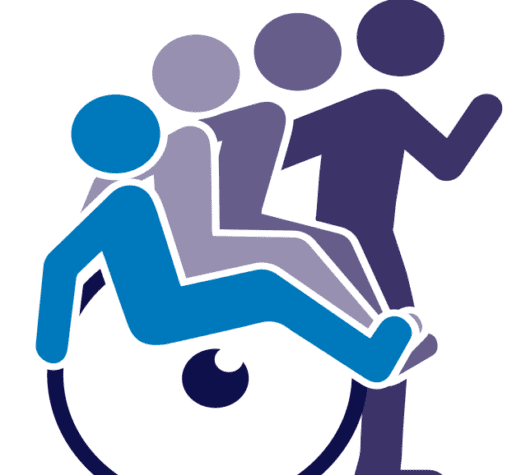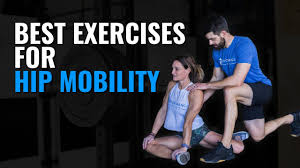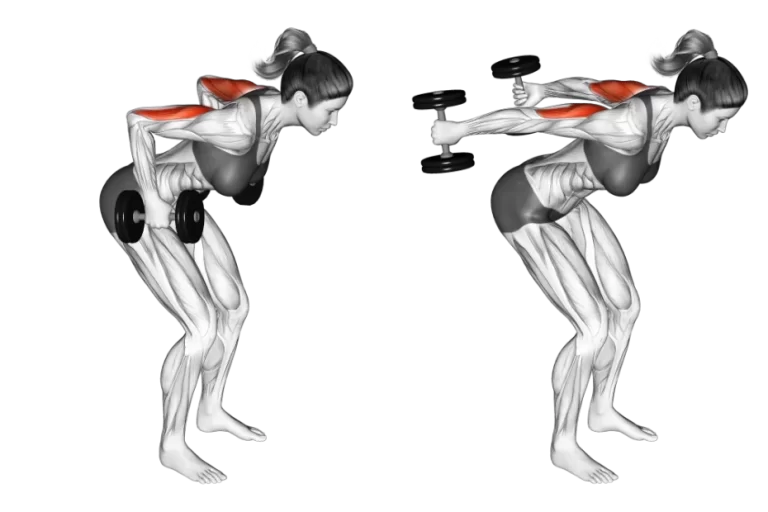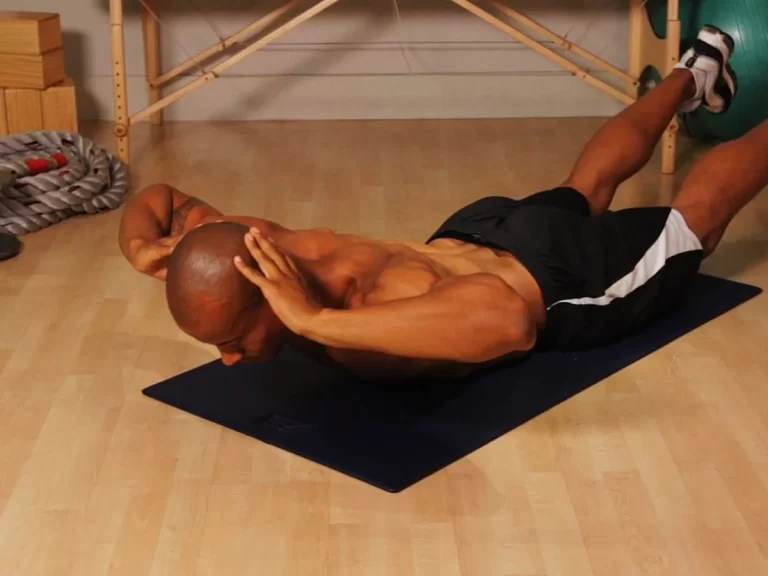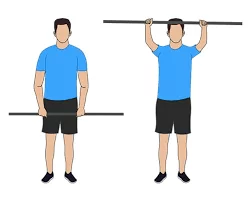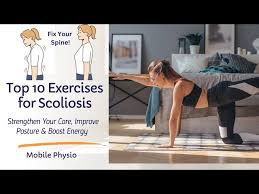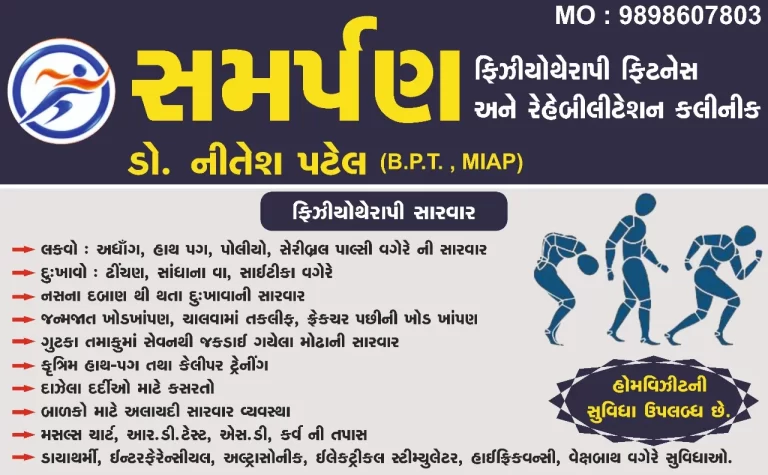5 Physio-Approved Exercises to Instantly Improve Hip Mobility
Table of Contents
Introduction:
Tight hips can be uncomfortable, restrict your range of motion, and possibly result in knee or lower back pain. Enhancing hip mobility is crucial for better posture, balance, and general flexibility, regardless of how active you are or how much time you spend sitting down.
This video will show you five exercises that a physical therapist has recommended to help you rapidly improve your range of motion, loosen up your hips, and make your body move more easily and effectively.
Benefits of Exercises to Instantly Improve Hip Mobility:
There are several functional and physical advantages to doing hip mobility exercises regularly. Walking, sitting, and bending are all made much simpler by these exercises, which help the hip joints become more flexible and increase the range of motion.
Increased hip mobility also lessens muscular tension and stiffness, which helps to avoid injuries and ease knee or lower back pain. Your body can move more effectively and painlessly in all directions thanks to these workouts, which also improve posture, stability, and athletic performance.
5 Exercises to Instantly Improve Hip Mobility Video
5 Exercises to Instantly Improve Hip Mobility:
90/90 Hip Rotations:
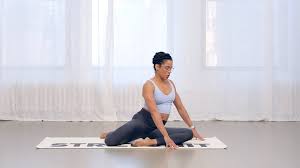
A potent mobility exercise that works the hips’ internal and external rotation is the 90/90 hip rotation. To do it, sit on the floor with one leg bent at a 90-degree angle in front of you and the other leg bowed at the same angle behind you.
Without raising your feet off the floor, steadily spin your knees from side to side while maintaining a lofty chest. This exercise increases joint flexibility, eases tense hip muscles, and improves control throughout the whole hip range of motion.
Hip Flexor Stretch:
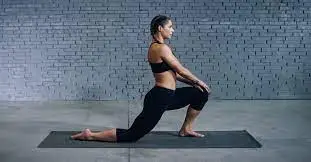
A great way to relieve stiffness in the front of your hips from extended sitting or bad posture is to perform a hip flexor stretch. With one knee on the floor and the other foot in front, create a 90-degree angle to start in a half-kneeling position.
Keep your back straight and your core strong as you slowly move your hips forward until you notice a significant stretch at the front of your rear leg’s hip. Hold each side of the stretch for 20 to 30 seconds. This exercise increases total lower body mobility, decreases stiffness, and improves hip extension.
Glute Bridge:
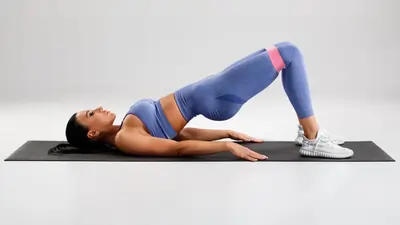
The glute bridge is a straightforward yet powerful exercise that increases hip mobility and strengthens the lower back, hamstrings, and glutes. To do it, place your feet flat on the floor, hip-width apart, and lie on your back with your knees bent.
Squeeze your glutes and engage your core as you raise your hips toward the ceiling so that your shoulders and knees make a straight line. In addition to engaging the posterior chain muscles, this exercise strengthens and stabilizes the hips generally and helps release tight hip flexors.
Dynamic Hip Circles:
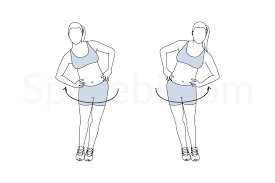
An excellent method for warming up the hip joints and increasing general mobility is to perform dynamic hip circles. To begin, place your hands on your hips or grasp onto a wall for balance while standing erect. Raise one leg to hip height, then slowly rotate it in a clockwise and counterclockwise direction.
Focus on completely expanding the hips in each direction while maintaining controlled, fluid motions. This exercise promotes blood flow, enhances joint flexibility, and prepares your hips for more strenuous motions or activities.
Pigeon Pose:
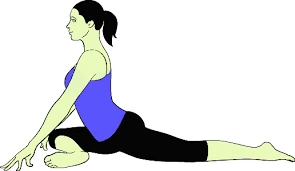
A deep hip-opening stretch that works the glutes, hip rotators, and lower back is the pigeon stance. Starting from a tabletop posture, stretch the opposing leg straight back and pull one knee forward, placing it behind your wrist. Lower your upper body softly over your front leg, resting on your forearms or the floor, while maintaining a square hip position.
To relieve hip stiffness, maintain the posture while taking deep breaths. In addition to improving general hip mobility and relaxation, this position helps to promote flexibility and decrease stiffness.
Conclusion:
Maintaining flexibility, balance, and general body movement requires increasing hip mobility. The 90/90 hip rotations, hip flexor stretch, glute bridge, dynamic hip circles, and pigeon position are five physio-approved exercises that help you increase your range of motion, strengthen your supporting muscles, and relieve tension.
Regular practice can help avoid injuries, lessen pain, and improve the fluidity and naturalness of daily motions. Being consistent is essential; even a short daily session may have a significant impact on your range of motion and comfort.
FAQs
Within a few weeks to a few months, you should start to observe gains in hip mobility with regular practice, which includes specific exercises and stretches.
Because they have been shown to maximize muscle growth, increase strength, and enhance functional fitness, the big five lifts—the deadlift, bench press, squat, shoulder press, and pull-up—are sometimes regarded as the finest compound exercises.
Sitting for extended periods of time is the primary cause of hip stiffness for many people. Your knees will be closer to your chest, and your hips will be in flexion for longer if you work at a desk. Maintaining this posture requires effort from your hip flexor muscles, which, over time, might lead to problems.
Hip arthritis, avascular necrosis, femoroacetabular impingement, hip dysplasia, and stress fractures are among the disorders that might be confused with hip flexor pain.
Although there is no scientific proof that emotions are “stored” in the hips, there are several theories that contend that the hips serve as a repository for emotional tension, stress, and trauma, including feelings of repressed sexual trauma, fear, anxiety, sadness, anger, and resentment. These theories are especially prevalent in yoga and bodywork. This theory is based on the connection between the hip region and the sacral chakra, as well as the relationship between hip muscles, including the psoas, and the body’s stress and fight-or-flight reactions. To release this pent-up emotional energy and enhance well-being, techniques like belly dancing and hip-opening yoga positions are used.
Regularly perform low-impact, mild workouts that improve circulation and supply oxygen and nutrients, such as yoga, stretching, and walking, to enhance blood flow to the hip joint. Overall circulatory health can also be supported by eating a balanced diet, drinking plenty of water, and maintaining a healthy weight. Consult a healthcare provider about some blood flow-affecting disorders, such as avascular necrosis, since they may prescribe medicine or suggest specialized therapies to treat the condition and enhance blood flow.
Try to stay away from activities like running, leaping, and jogging when you have hip pain. The hips are often under a lot of stress from these high-impact aerobic exercises. This can be harmful if your hips are already at risk.
It might take anywhere from two to three weeks of regular stretching to several months to see substantial improvements in flexibility. Depending on personal circumstances and level of commitment, noticeable progress might occasionally take several months.
This practice can eventually impair hip mobility and health, leading to several problems, such as: Tight hip flexors: Sitting for extended periods of time shortens your hip flexor muscles, which, over time, may cause pain. This tightness may cause pain and limit your range of motion.
Stretches for the hip flexors, such as the Spiderman stretch, and foam rollers should assist in releasing the tense hip muscles. Relief can also be obtained by treatment from a licensed sports and remedial massage therapist. If you experience chronic pain in any region of your body, it is still preferable to consult a physician.
Stretches like the knee-to-chest, butterfly, and half-kneeling hip flexor stretches will help loosen stiff hips. Hold each stretch for 20 to 30 seconds and do two to three sets. Additionally, you might attempt hip mobility exercises like 90/90 stretches and figure-four stretches. Avoiding extended periods of sitting and moving around frequently can also help release tension.
It is essential to perform this activity every day to assist in maintaining and enhancing hip mobility. In the video, our favorites are: Try to hold the upright pigeon stretch for six deep inhalations and exhalations on each side. Try to hold the hip flexor stretch for six deep inhalations and exhalations on each side.
To compensate for hip strength imbalances, muscles may also tighten. Popular exercises for relieving hip joint musculature tightness include the banded knight, active frog, and 90-90. When the fibrous joint capsule thickens or becomes rigid, the joint capsule itself may become tight.
Static stretches, dynamic motions like leg swings and Controlled Articular Rotations (CARs), and joint range-of-motion exercises like yoga and pilates are all examples of effective mobility exercises. Essential exercises target several body areas, including the spine with diaphragmatic breathing and cat-cow position, the hips with hip CARs and cossack squats, the ankles and hamstrings with downward dog, and the shoulders with shoulder pass-throughs. Include exercises that increase body awareness, balance, and strength in the muscles around the joints for a well-rounded approach.
Pull your right leg into your chest while lying on your back. Feel your hips extend as you press the back of your left knee onto the floor. Maintain this posture for a maximum of 30 seconds. Do this two or three times on each side.
Within a few weeks to a few months, you should start to observe gains in hip mobility with regular practice, which includes specific exercises and stretches.
Position yourself on the floor with one hand slightly behind your back, legs bent, and feet flat. Reach your free hand toward the ceiling, extending your fingers wide, and raise your hips a little off the ground. Lift your hips even higher off the ground.
To sum up, physical therapy is a very safe and efficient way to treat hip instability. It may help you restore your mobility, lessen your pain, and enhance your general quality of life.
Position yourself on the floor with one hand slightly behind your back, legs bent, and feet flat. Reach your free hand toward the ceiling, extending your fingers wide, and raise your hips a little off the ground. Lift your hips even higher off the ground.
To sum up, physical therapy is a very safe and efficient way to treat hip instability. It may help you restore your mobility, lessen your pain, and enhance your general quality of life.
90/90 Stretches for the Hips
With both knees bent at a 90-degree angle, sit on the floor with one leg in front of you and the other behind you. You will clearly feel your hips releasing and extending as you lean forward a little and maintain the position for at least 30 seconds.
References:
- Cronkleton, E. (2025, July 3). 14 Exercises for strengthening and increasing mobility in the hips. Healthline. https://www.healthline.com/health/hip-exercises
- Asc-Ca. (2025, February 23). 5 Movements for increasing hip mobility. Ace Sports Clinic. https://www.acesportsclinic.com/blog/5-movements-for-increasing-hip-mobility/
- Kirkup-Lee, A. (2025, February 12). The 5 best hip stretches to improve hip mobility. Gymshark. https://row.gymshark.com/blog/article/best-hip-stretches-to-improve-hip-mobility
- Miracles Health Expert & Miracles Health. (2025, July 5). 5 Exercises for healthy hip joints after long sitting. Miracles Health. https://www.miracleshealth.com/blog/5-exercises-for-healthy-hip-joints-after-long-sitting
- Side lying leg raise. (n.d.). [Video]. Hingehealth. https://www.hingehealth.com/resources/articles/hip-exercises/
